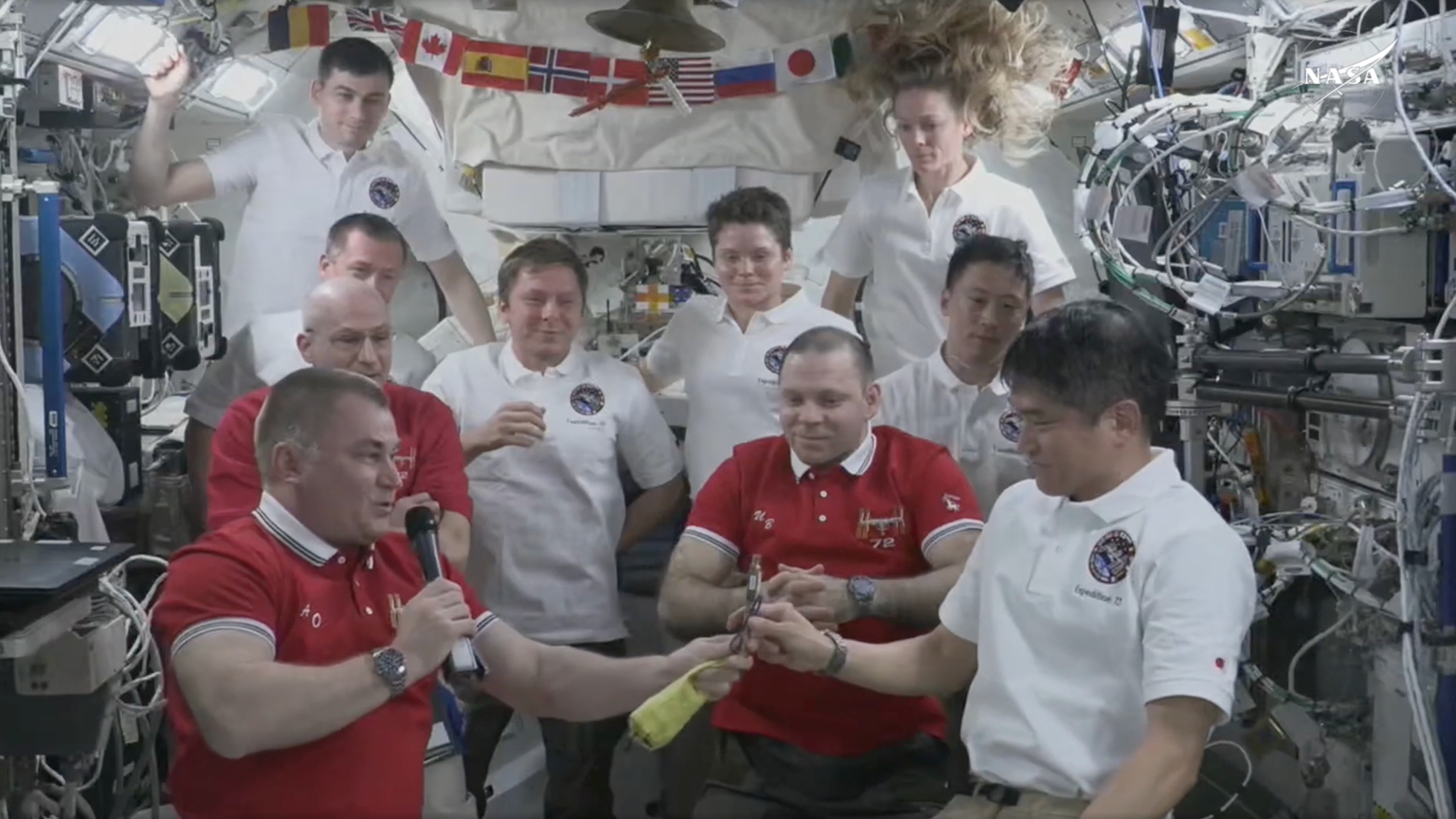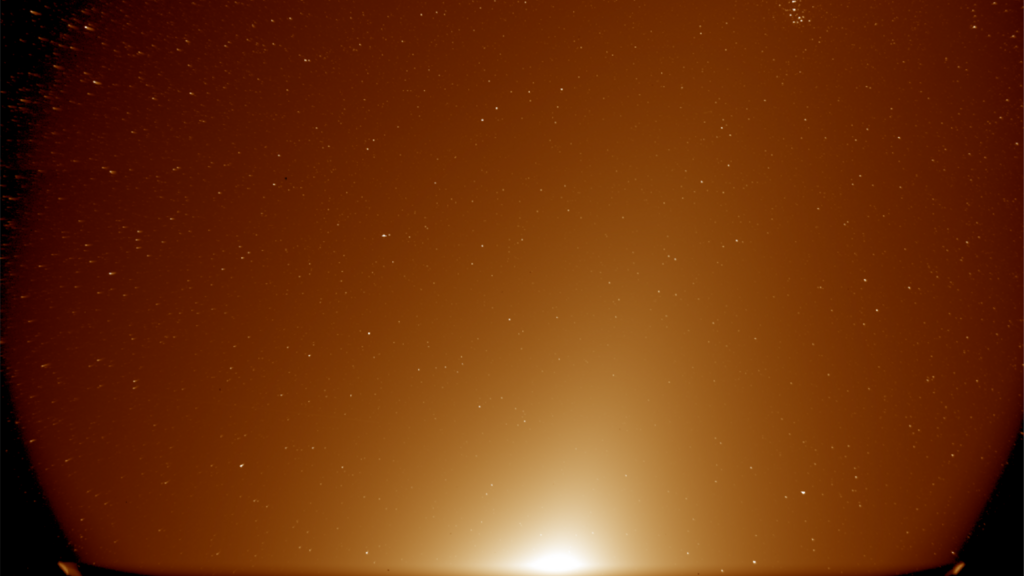Dream Chaser Space Plane Makes Crucial Leap Toward Orbital Flights
EDWARDS, Calif. — Sierra Nevada's Dream Chaser spacecraft completed a successful captive-carry test (in which the craft is suspended from another vehicle during flight) today (Aug. 30) at NASA's Armstrong Flight Research Center in California's Mojave Desert. The flight test was a crucial step toward using the space vehicle for orbital flights to the International Space Station.
Attached with a 200-foot-long (61 meters) cable to a Columbia 234-UT helicopter, a test model of the Dream Chaser lifted off at 7:21 a.m. PDT (10:21 a.m. EDT/1421 GMT). The two vehicles flew over Rogers Dry Lake for 1 hour and 41 minutes before landing (with Dream Chaser's gear extended) at 9:02 a.m. PDT (12:02 p.m. EDT/1602 GMT).
"It went as well as we could possibly expect," said Steve Lindsey, Sierra Nevada vice president of Exploration Systems, to a group of reporters after the flight. "We met every single flight-test objective." [Dream Chaser's Captive Carry Test in Pictures]
Despite high heat that threatened to limit the helicopter's operating altitude, the pilots were able to get Dream Chaser to its intended "drop box" of around 12,500 feet, Lindsey said. In a "free-flight test," the vehicle would be released from its carrier vehicle and allowed to glide back to Earth. During today's test, engineers were able to remotely test the spacecraft's avionics, aerodynamics, landing gear and other systems.
"All the avionics worked exactly as expected," Lindsey said. "We obviously have to look at the data. We have reams and reams of data we've got to go look at. But, what we saw real time, everything was working exactly as expected."
The flight was the first of two planned captive-carry tests that Sierra Nevada will conduct from the NASA facility in the Mojave Desert. Once the flights are completed, Dream Chaser will be ready for an autonomous, free-flight, approach-and-landing test later this year.
Sierra Nevada is developing the uncrewed shuttle to carry NASA cargo to the International Space Station (ISS) under the space agency's Commercial Resupply Services (CRS-2) program. NASA has awarded the company a minimum of six cargo flights from 2019 to 2024. The Dream Chaser will be carried to space by a rocket, but has the capability to return to Earth and land autonomously, similar to NASA's space shuttle.
Get the Space.com Newsletter
Breaking space news, the latest updates on rocket launches, skywatching events and more!
The 30-foot-long vehicle, which is about one-quarter the length of the retired space shuttle, will be capable of delivering up to 5,500 kilograms (12,125 lbs.) of pressurized and unpressurized cargo to the space station. It is expected to make its first flight to the orbiting facility aboard a United Launch Alliance Atlas V booster in 2020.
Dream Chaser arrived at NASA Armstrong in January to begin a series of tests leading up to the two captive-carry test flights and the subsequent approach-and-landing flight. Engineers recently completed a successful series of tow tests in which the spacecraft reached 60 mph (96 km/h).
Today's test was the first Dream Chaser flight in nearly four years. On Oct. 26, 2013, the same vehicle crashed during its first approach-and-landing test at Edwards. The glide portion of the flight went as planned, but the vehicle's left main landing gear failed to deploy properly, causing the Dream Chaser to skid off the runway.

At the time, Sierra Nevada was competing against Boeing and SpaceX in NASA's Commercial Crew Program to take astronauts to the ISS. Eleven months after the accident, Dream Chaser was dropped from the fourth and final round of the program when the space agency awarded contracts to Boeing and SpaceX.
Sierra Nevada continued developing Dream Chaser for both human and cargo flight, however. In January 2016, NASA awarded the company a commercial resupply contract to the ISS, along with SpaceX and Orbital ATK. That agreement is for cargo services only.
Dream Chaser will have a cargo module at its rear that will separate from the spacecraft after separation from the ISS. The cargo module is designed to burn up in the Earth's atmosphere, giving astronauts the ability to dispose of trash and unneeded equipment.
Dream Chaser will then re-enter the Earth's atmosphere and glide back to a landing on a runway at the former Shuttle Landing Facility at NASA's Kennedy Space Center in Florida. Sierra Nevada is also pursuing alternative landing sites at Ellington Airport in Houston, Texas, and Huntsville International Airport in Alabama.
Sierra Nevada has continued to work with NASA on developing a human-rated Dream Chaser under an unfunded Space Act Agreement. The company recently extended the agreement to August 2022, with several additional milestones added.
The human-rated Dream Chaser will be capable of carrying up to seven astronauts to the ISS. Sierra Nevada continues to pursue funding options to develop the crewed system.
Follow us @Spacedotcom, Facebook and Google+. Original article on Space.com.
Join our Space Forums to keep talking space on the latest missions, night sky and more! And if you have a news tip, correction or comment, let us know at: community@space.com.
Douglas Messier is the managing editor of Parabolicarc.com, a daily online blog founded in 2007 that covers space tourism, space commercialization, human spaceflight and planetary exploration. Douglas earned a journalism degree from Rider University in New Jersey as well as a certificate in interdisciplinary space studies from the International Space University. He also earned a master's degree in science, technology and public policy from George Washington University in Washington, D.C. You can follow Douglas's latest project on Twitter and Parabolicarc.com.









